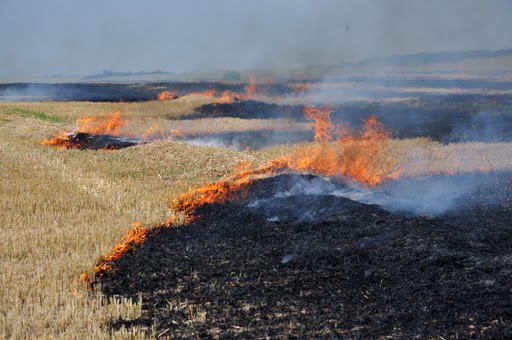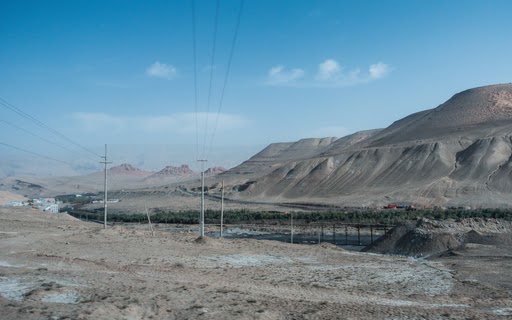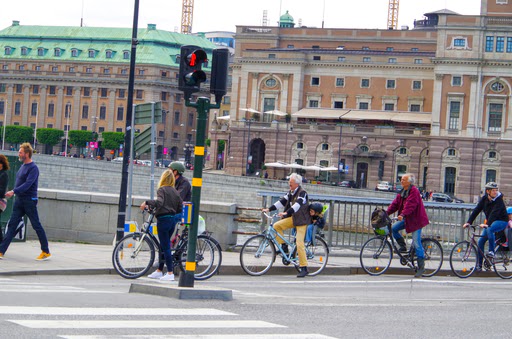According to the Environmental Protection Agency (EPA), transportation is responsible for only 10% of PM 2.5 and PM 10 pollutants in the United States. The primary causes of air pollution are industrial waste, burning of agricultural residue, and other similar activities.
Imagine a world without vehicles! Not only would there be significantly less air pollution, but people would also have to rely on walking to get to work, school, and even other countries! This was the reality for early civilizations, who had to deal with such limitations.
However, the invention of the wheel revolutionized transportation, making it much easier than traveling on foot. Over time, owning a vehicle has become as essential as breathing for many people. Think back to high school. Whenever pollution was discussed, what was always mentioned? Vehicles! Every student has written at least one essay on the environmental consequences of increased automotive traffic.
How Much Do Vehicles Truly Contribute to Air Pollution?
According to the US Environmental Protection Agency, cars account for 75% of carbon monoxide pollution in the United States. When these pollutants are released into the atmosphere, they react with sunlight and heat to form smog. The severity of the problem is evident from the fact that although the US has only 30% of the world’s vehicles, it contributes about 50% of the global automotive air pollution!
 Smog in New Delhi, India (Photo Credit: Saurav022/Shutterstock)
Smog in New Delhi, India (Photo Credit: Saurav022/Shutterstock)
Moreover, a 2015 report found that diesel vehicles were a major cause of health issues related to air pollution in India. The World Health Organization (WHO) states that nearly 3.7 million premature deaths occur every year due to outdoor air pollution, which is predominantly caused by vehicle emissions.
The Union of Concerned Scientists identifies cars and trucks as one of the primary sources of air pollution worldwide. This implies that besides vehicles, other factors also contribute significantly to the release of pollutants that degrade air quality and make it unsuitable for breathing.
Vehicles clearly impact pollution levels in cities through their carbon emissions. They also contribute to increased emissions of nitrogen and oxygen-containing chemicals known as NOx, such as nitric oxide and nitrogen dioxide. NOx, in turn, contributes to the formation of smog and acid rain.
Other Contributors to Air Pollution
There are several other factors that are equally or perhaps even more significant contributors to air pollution. These include wildfires, burning of agricultural residue, industrial waste, and various other factors. Natural disasters like volcanic eruptions release aerosols into the air, further adding to the pollution.
In countries like India and China, rural communities burn biomass for cooking and heating purposes. Due to the large populations of these countries, these activities become significant sources of the high concentration of particulate matter in the air.
What Are Some Specific Instances Where ‘Other’ Factors Contribute to Air Pollution?
India
New Delhi, the capital of India, is located in a landlocked region close to fertile plains where extensive agriculture takes place.
Stubble Burning
In this region, farmers practice stubble burning, which involves burning crop residue after harvesting. The reason behind this is the use of the PUSA 44 variety of paddy, which is the main crop cultivated by Indian farmers. However, this variety provides less time for further cultivation as it is cut 50-60 cm above the ground during mechanized harvesting. The disposal of the remaining straw is difficult because it doesn’t form good chaff for animal feed. As a result, farmers are left with no choice but to burn it. Unlike Mumbai and Chennai, Delhi’s wind speed is not effective in dispersing the particulate matter from these fires. Stubble burning increases black and brown carbon emissions and contributes to higher levels of nitrogen dioxide in the air, leading to dangerously high pollution levels in the region.
 Crop residue being burnt after harvest (Photo Credit: Orest lyzhechka/Shutterstock)
Crop residue being burnt after harvest (Photo Credit: Orest lyzhechka/Shutterstock)
China
Hotan, China, is another example of a highly polluted city, ranking 8th on the Greenpeace and IQAir AirVisual list. The city is located near the Taklamakan Desert, which experiences regular sandstorms that significantly increase the PM 2.5 levels in the region. Hotan is still developing and has many factories that contribute to poor air quality.
 The sandy vicinity of Hotan (Photo Credit: Bluesilent/Shutterstock)
The sandy vicinity of Hotan (Photo Credit: Bluesilent/Shutterstock)
It may seem unusual, but according to the United Nations, agriculture is responsible for 18% of greenhouse emissions. Methane emissions from cattle, a sub-factor within agriculture, play a significant role in these emissions.
How Can We Reduce Vehicular Emissions?
Based on the above facts, it is evident that transportation, along with other factors, contributes to air pollution. To reduce transportation pollution, we need to develop more energy-efficient vehicles that are also practical. Instead of solely focusing on electric transportation, we can also promote the use of bicycles, which has been increasingly adopted by Nordic countries in recent years.
Cycling: A Potential Solution
Cycling not only helps reduce inactivity and promote a healthier lifestyle but also contributes to a cleaner and greener environment. In cities like Stockholm, it is common to see bikers filling the streets. Cycling not only reduces the need for more factories, which contribute to pollution, but also alleviates traffic congestion in major cities like Los Angeles and Bengaluru.
 People cycling in Stockholm, Sweden (Photo Credit: futuristman/Shutterstock)
People cycling in Stockholm, Sweden (Photo Credit: futuristman/Shutterstock)
Summary
According to the US Environmental Protection Agency, the transportation industry is only responsible for 10% of PM 2.5 and PM 10 emissions in the United States. This validates the idea that vehicles are not solely to blame. However, they do bear some responsibility!
The idea of reverting to ancient civilizations’ practice of walking everywhere is clearly not feasible. That is why we must make a choice. We can either continue driving our large, flashy cars and spend the rest of our lives wearing N95 masks, or we can opt for increased bicycle usage and restore our environment to its healthy past!
